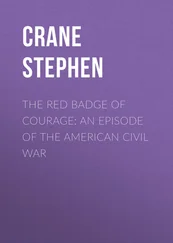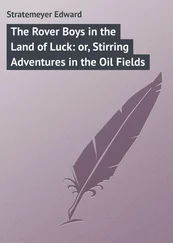Stephen Fry - The Ode Less Travelled - Unlocking The Poet Within
Здесь есть возможность читать онлайн «Stephen Fry - The Ode Less Travelled - Unlocking The Poet Within» весь текст электронной книги совершенно бесплатно (целиком полную версию без сокращений). В некоторых случаях можно слушать аудио, скачать через торрент в формате fb2 и присутствует краткое содержание. Жанр: Старинная литература, на английском языке. Описание произведения, (предисловие) а так же отзывы посетителей доступны на портале библиотеки ЛибКат.
- Название:The Ode Less Travelled: Unlocking The Poet Within
- Автор:
- Жанр:
- Год:неизвестен
- ISBN:нет данных
- Рейтинг книги:3 / 5. Голосов: 1
-
Избранное:Добавить в избранное
- Отзывы:
-
Ваша оценка:
- 60
- 1
- 2
- 3
- 4
- 5
The Ode Less Travelled: Unlocking The Poet Within: краткое содержание, описание и аннотация
Предлагаем к чтению аннотацию, описание, краткое содержание или предисловие (зависит от того, что написал сам автор книги «The Ode Less Travelled: Unlocking The Poet Within»). Если вы не нашли необходимую информацию о книге — напишите в комментариях, мы постараемся отыскать её.
The Ode Less Travelled: Unlocking The Poet Within — читать онлайн бесплатно полную книгу (весь текст) целиком
Ниже представлен текст книги, разбитый по страницам. Система сохранения места последней прочитанной страницы, позволяет с удобством читать онлайн бесплатно книгу «The Ode Less Travelled: Unlocking The Poet Within», без необходимости каждый раз заново искать на чём Вы остановились. Поставьте закладку, и сможете в любой момент перейти на страницу, на которой закончили чтение.
Интервал:
Закладка:
The weak endings of ‘melteth’ and ‘pelteth’ (after all, in his time Keats could perfectly well have said ‘melts’ and ‘pelts’) echo the meaning of the image by melting and popping to their end rather than banging to a solid conclusion. Sweet Pleasure’s evanescence is evoked by the evanescence of the metre. At a touch sweet Pleasure melteth,Like to bubbles when rain pelteth;
Did he consciously set out to do this and for that reason? Well, I think someone with a sensitive ear for the rhythms and cadences of verse wouldn’t need to be taught something like that. To anybody with the slightest instinct such use in metre would come as naturally as finding the right musical phrase for the right emotion comes to a composer. It is true, however, that Keats from an early age completely soaked himself in poetry and (despite being labelled a ‘Cockney poet’ by literary snobs of the time) experimented all his life with poetic form and constantly wrote about prosody and chewed over its nuances passionately with his friends and fellow poets. A mixture of absorption in poetry, obsession with technique and, of course, natural talent culminates in what you might call ‘poetic taste’–a feel for precisely which techniques to reach for.
Incidentally, for some reason Keats’s ‘Fancy’ was one of my favourite poems when I was a mooncalf teenager. Don’t ask me why: it is after all a slight work compared to ‘Endymion’, ‘Lamia’ and the great Odes.
M IXED F EET
Let us consider the whole issue of mixing feet within a poem. The end of writing poetry is not to write ‘perfect’ metre with every line going da- dumor dum-da into the distance, it is to use the metre you’ve chosen to reflect the meaning, mood and emotional colour of your words and images. We’ve already seen how subtle variations such as pyrrhic and trochaic substitutions stand as perfectly acceptable ways of bringing iambic pentameter to life. What about mixing up whole lines of iambic and trochaic metre in the same verse?He bangsthe drumsand makesa noise Scaring girlsand waking boys
Nothing necessarily wrong with that either. Don’t get hung up on writing perfectly symmetrical parades of consistent rhythm. Utterance , sung or spoken, underlies poetry. Human utterance, like its heartbeat and its breathing, quickens, pauses and breaks its patterns according to states of relaxation, excitement, passion, fear and all manner of moods and feelings: this is precisely why I took so long over caesura and enjambment earlier. No one could say that the above two lines are wrong , it is surprisingly rare, however, to find two metres mixed in this fashion (in ‘literary’ verse, as opposed to popular ballad and song lyrics, at least) and you would want to alternate trochaic and iambic lines for a good reason: the ‘ear’ of the reader would note (however subconsciously) the variation and expect something from it. Perhaps in the above example the alternating trochaic lines could form a kind of chorus or explanatory aside:He bangs the drums and makes a noise(Scaring girls and waking boys) He makes a row till dawn unfurls(Waking boys and scaring girls) I never knew a greater pest(Even squirrels need a rest)He drives his wretched family wild(Spare the rod and spoil the child)
So long as you are in control of the metre, using its swing and balance to fit the mood, motion or story of your poem there is no reason not to use a variety of beats within the same piece. I would only repeat this observation: well-made poems do not mix up their metric scheme carelessly . Have you ever seen a parish magazine or some other flyer, newsletter, brochure or poster where the designer has got too excited about the number of fonts available on his computer and created a great crashing mess of different typefaces and sizes? Musical pieces often go into double time or modulate up or down for effect, but generally speaking such techniques are crass and ugly unless there is a good purpose behind it all. Most of the paintings we admire use a surprisingly small palette of colours. A profusion of herbs in a dish can cancel out each flavour or drown the main ingredients. You get the idea.
Having said all that, let’s look at the whole first stanza of Blake’s ‘The Tyger’. Tyger, tyger, burning bright Inthe forests ofthe night Whatim mortal handor eyeCould framethy fearful symme try?
As we observed earlier, these are trochaic four-stress lines (docked of their last weak syllable). That holds true of the first three lines, but what’s afoot with the last one? It is a regular iambic four-stress line. Here’s the third stanza: Andwhat shoulder andwhat artCould twistthe sinews ofthy heart?And, whenthy heartbe ganto beat, Whatdread handand whatdread feet?
Trochaic first and last lines ‘enveloping’ two central iambic lines; and the poem’s penultimate stanza runs: Whenthe starsthrew downtheir spears,And water’d heaven withtheir tears, DidHe smileHis workto see?Did Hewho madethe lambmake thee?
In this case we alternate between trochaic and iambic tetrameters. The rest of the poem is trochaic. With a little casuistry one could, I suppose, make the argument that Blake’s shift between metres ‘stripes’ the verse as a tiger is striped. I think that is more than a little tenuous: there is no plan to the changes between metre, no apparent design at work: certainly, poets in the past and present have employed metre, rhyme and even the shape of the words on a page further to conjoin form with subject matter, but I do not believe this applies here.
Nonetheless, the variations can hardly be said to spoil the poem: the docking of the final trochaic foot matches the standard male endings of the iambic. After all, one could look at it this way : are the odd lines out really iambic, or are they trochees with an extra weak syllable at the beginning ? Trochees are the opposite of iambs: if you can pop a weak syllable at the end of an iambic line, why not shove one on to the beginning of a trochaic one? If you read those stanzas above, missing out the unstressed syllables at the start of each iambic line you will see what I mean. It is finally a matter of nomenclature and one’s own ear. For many modern metrists there’s no such thing as the iamb or the trochee at all, there are only lines with a set number of beats or stresses to them. Where the weak syllables come is, for them, irrelevant. They would have us believe that English verse should be treated as if it is accentual, but not accentual-syllabic. I can’t go that far, myself: there is an obvious and to my ear absolute difference between the whole nature of Hiawatha and that of, say, ‘She walks in beauty’. There certainly was to Longfellow and Byron.
Читать дальшеИнтервал:
Закладка:
Похожие книги на «The Ode Less Travelled: Unlocking The Poet Within»
Представляем Вашему вниманию похожие книги на «The Ode Less Travelled: Unlocking The Poet Within» списком для выбора. Мы отобрали схожую по названию и смыслу литературу в надежде предоставить читателям больше вариантов отыскать новые, интересные, ещё непрочитанные произведения.
Обсуждение, отзывы о книге «The Ode Less Travelled: Unlocking The Poet Within» и просто собственные мнения читателей. Оставьте ваши комментарии, напишите, что Вы думаете о произведении, его смысле или главных героях. Укажите что конкретно понравилось, а что нет, и почему Вы так считаете.










